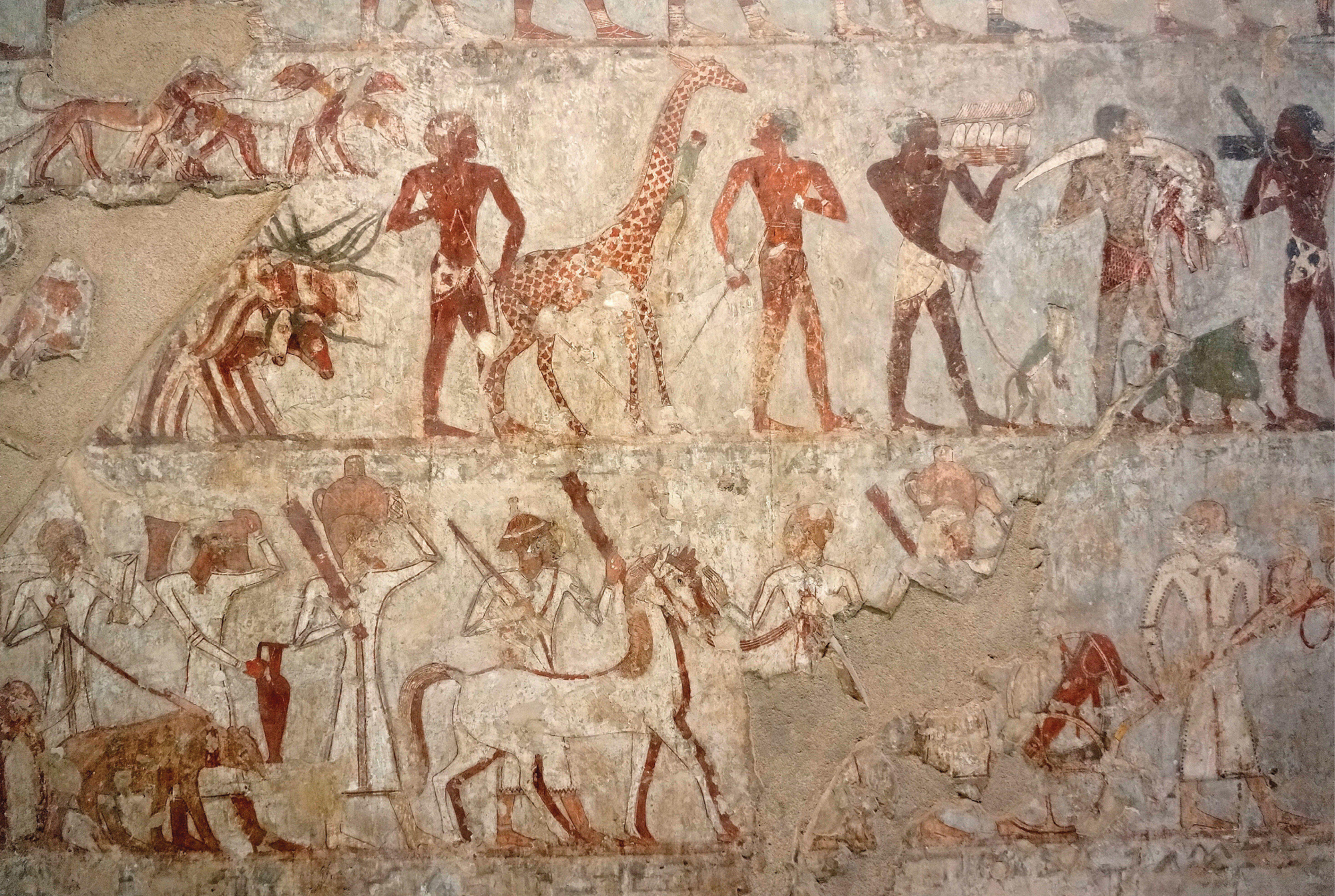![]() Ecological Crises c. 2000 BCE
Ecological Crises c. 2000 BCE
3 Nomads, Territorial States, and Microsocieties, 2000–1200 BCE

Before You Read This Chapter
GLOBAL STORYLINE
COMPARING FIRST STATES
- Climate change and environmental degradation lead to the collapse of river-basin societies.
- Transhumant migrants (with their animal herds in need of pasturage) and pastoral nomads (with their horse-drawn chariots) interact, in both destructive and constructive ways, with settled agrarian societies.
- A fusion of migratory and settled agricultural peoples produces expanded territorial states—in Egypt, Southwest Asia, the Indus River valley, and Shang China—that supplant earlier river-basin societies.
- Microsocieties emerge in the South Pacific, the eastern Mediterranean, the northern frontier of Europe, and the Americas as a result of expanding populations and increased trade.
CHAPTER OUTLINE
- Climate Change, Nomadic Movement, and the Emergence of Territorial States p. 90
- The Territorial State in Egypt p. 96
- Territorial States in Southwest Asia p. 101
- Nomads and the Indus River Valley p. 105
- The Shang Territorial State in East Asia p. 107
- Microsocieties in the South Pacific, the Aegean, Northern Europe, and the Americas p. 111
- Conclusion p. 118
FOCUS QUESTIONS
- What were the effects of climate change on human settlement patterns in the second millennium BCE?
- In what ways did transhumant herders and pastoral nomads affect settled communities?
- How did territorial states form and interact with one another across Afro-Eurasia? In what ways were these varied processes alike, and in what ways were they different?
- Where in the South Pacific, the Aegean, the northern frontier of Europe, and the early states of the Americas did microsocieties develop, and how did geographical factors affect their development?
Around 2200 BCE, the Old Kingdom of Egypt collapsed. Evidence for its ruin includes a history of numerous ineffective rulers, imprecise workmanship on pyramids, and many incomplete funerary and temple structures. Yet the collapse did not occur because of incompetent rulers or a decline in the arts and sciences. The Old Kingdom fell because of radical changes in climate—namely, a powerful warming and drying trend that blanketed Afro-Eurasia beginning around 2200 BCE. The Mesopotamians and Harappans were as hard hit as the Egyptians. In Egypt, the environmental disaster yielded a series of low Niles because the usual monsoon rains did not arrive to feed the river’s upper regions, particularly the Blue Nile arising in the mountains of Ethiopia. (For more on the impact of climate change in the river-basin cultures, see Current Trends in World History: Climate Change at the End of the Third Millennium BCE in Egypt, Mesopotamia, and the Indus Valley, in Chapter 2.)
Documents from this period reveal widespread suffering and despair. People who had enjoyed prosperity and good government for centuries now lived in utter disbelief that the world had been turned upside down and that the wicked triumphed over the virtuous. Consider the following tomb inscription: “All of Egypt was dying of hunger to such a degree that everyone had come to eating his children.” Or another: “The tribes of the desert have become Egyptians everywhere. . . . The plunderer is everywhere, and the servant takes what he finds” (Bell, pp. 9, 23).
Settled societies were not alone in their losses. Herders and pastoral nomads also felt the pinch. As these outsiders pressed upon permanent settlements in search of sustenance, the governing structures in Egypt, Mesopotamia, and the Indus Valley collapsed. The pioneering city-states may have created unprecedented differences between elites and commoners and between urbanites and rural folk, but everyone felt the effects of this disaster.
This chapter focuses on two related developments. The first focus is the impact of climate change on the peoples of Afro-Eurasia: famines occurred, followed by political and economic turmoil. The old order gave way as river-basin states in Egypt, Mesopotamia, and the Indus Valley collapsed. Herders and pastoral nomads, driven from grazing areas that were drying up, forced their way into the heartlands of these great states in pursuit of better-watered lands. Once there, they challenged the traditional ruling elites. The nomads also brought with them a new military weapon—the horse-drawn chariot. Nomads and their chariots form the second focus of this chapter, for chariots introduced a type of warfare that would dominate the plains of Afro-Eurasia for half a millennium. The nomads’ advantage proved only temporary, however. Soon the Egyptians, Mesopotamians, Chinese, and many others learned from their chariot-driving conquerors: they assimilated some of their foes into their own societies and drove others away, adopting the invaders’ most useful techniques. This chapter also examines worlds apart from the expanding centers of population and politics, where climate change and chariot-driving nomads were shaping world history. The islanders of the Pacific and the Aegean did not interact with one another with such intensity—and therefore their political systems evolved differently. In these locales, microsocieties (small-scale, loosely interconnected communities) were the norm.